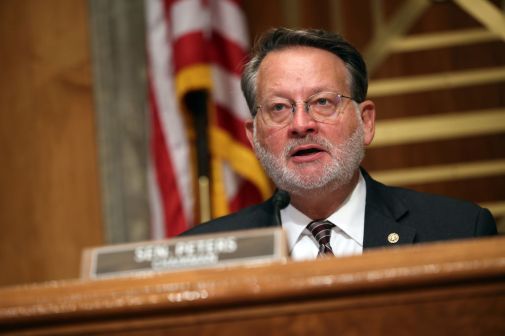Industry fears inflexibility in new OMB software policy

Software vendors want more clarity about how new Office of Management and Budget guidance for more centralized software licensing will affect their flexibility to deliver products and services that fit agencies’ specific needs.
“Industry has a couple of questions frankly about how some of this might work,” said Trey Hodgkins, public sector senior vice president for the Information Technology Industry Council — a trade group representing dozens of leading software companies that serve the federal government.
OMB issued the binding guidance in December to promote more efficient and effective management and procurement of software licensing across government. The directive, signed by U.S. Chief Information Officer Tony Scott and U.S. Chief Acquisition Officer Anne Rung, was driven by a section of the Federal IT Acquisition Reform Act, or FITARA, that requires agencies to take better control of their spending on software and reduce duplicative licensing.
The new guidance broadly calls for the development of governmentwide software deals — like the General Services Administration’s recent agreement to use a single contracting vehicle for all Esri software across every agency — that leverage the government’s buying power and cut redundant negotiations of similar contracts. It’s left some software vendors worried that it might affect their ability to sell to their niche customers.
[Read more: White House will fix way government buys software]
“The downside is that not all my customers may go to those [contractual] vehicles, so now I have customers looking for my product and I haven’t got it in a place where they’re looking for it or where it can be readily acquired,” Hodgkins said.
His members are worried this type of policy, though still in draft form, may “close off their opportunities to sell products.” ITI plans to file comments on the draft soon, he said.
“One reason you see this multitude of vehicles in the federal government is because you have different customers with different needs,” Hodgkins told FedScoop. However, with the new model of consolidated, governmentwide contracts, “if you have a product, and it ends up not offered on one of those vehicles and you can’t clearly identify how to get it on one of those vehicles, then you’re just out of the market,” he said.
Alan Chvotkin, executive vice president and counsel for the Professional Services Council, which also represents a variety of federal software vendors, agreed that the push for “standardized” contracting might preclude vendors from best serving agencies with specific needs.
“Those kinds of ‘thou shall nots’ tend to be harsh,” he said. “The federal government is very big and very diverse.”
For Esri, a company that’s a pioneer in moving to this kind of contracting, the guidance feels less cut and dry. There’s still room to build custom for customers with special needs, said Jeff Peters, director of global national government sales at the company.
[Read more: GSA — New geospatial software deal could save agencies millions]
“I think there’s always going to be custom-built software … there [are] always going to be people who need more than what the specification outlines,” Peters said. “It’s not an ‘or,’ it’s an ‘and.’”
But if every contract is thought of as unique — which is not the case, as made evident by the woes echoed throughout the federal government by CIOs overcome by duplicative, legacy systems — it becomes a problem of efficiency and wasting taxpayers’ money, he said. “FITARA has the potential to at least start to help there.”
“Where the capability meets the mission requirement, this is the best value for government,” Peters told FedScoop. “And there are going to be systems that are very custom and very specific to some things. Those systems are going to exist just like they do today.
“But if you think of everything as a one-off custom build, you’re never going to get there,” concluded Peters.
Concerned software companies and trade groups are, however, grateful the administration released the guidance in draft format with a period to submit comments. The preceding directive on purchasing workstation hardware came without a comment period.
“Kudos to them for putting something out in draft,” said Chvotkin, whose organization, like ITI, intends to comment on behalf of its members.
Through the comment and revision process, many in industry hope to find a balance between this new unified licensing model and best serving agencies’ one-off needs.
“It’s definitely not the answer to everything,” said Peters, conceding that even Esri’s agreement with GSA isn’t perfect. “It’s a step in the right direction, but it doesn’t include everything. The spirit of the agreement is really about contract efficiency, bringing technology quickly that allows the government to modernize.”
But if federal agencies want to see a faster move toward more efficient and cost-effective software licensing, he said, the power is in the hands of the CIOs under FITARA.
“I think it will be interesting to see if CIOs start to demand FITARA-compliant technology. If [vendors] want to be a big software company selling to the federal government, you’re going to need to be FITARA-compliant,” Peters said. Vendors, Esri included, he said, would have to comply to do business, just like they did after the emergence of the Federal Information Security Management Act and the Federal Risk and Authorization Management Program.
“It was a big investment,” Peters said, “and frankly we’re a better country because of it.”
Industry has until Jan. 20 to comment on the draft guidance.
Reach the reporter on this story at billy.mitchell@fedscoop.com. Follow him on Twitter @BillyMitchell89.





